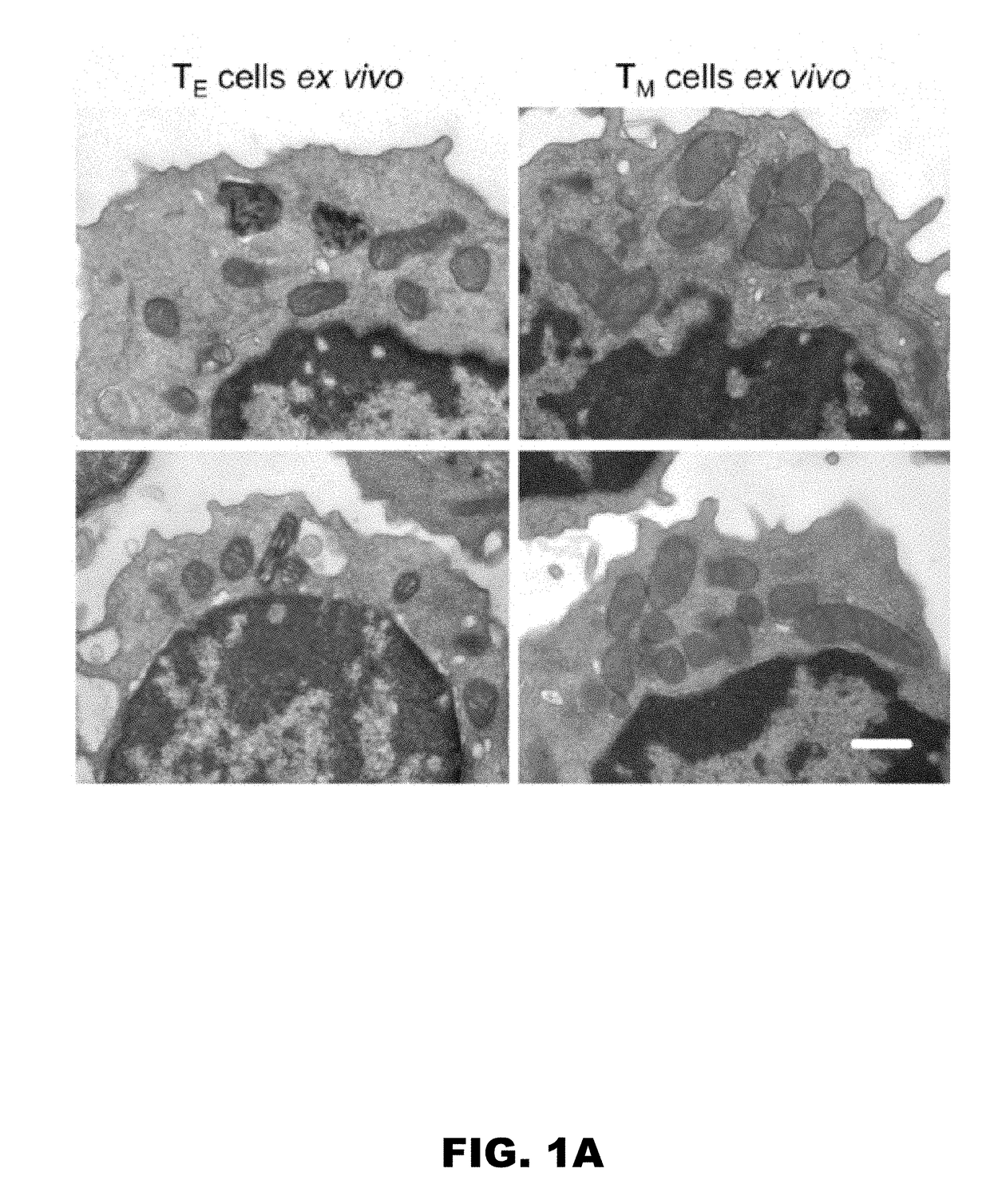Methods of reducing immune cell activation and uses thereof
a technology of immune cell activation and reducing inflammation, applied in the field of reducing inflammation, can solve problems such as destruction of healthy tissue, achieve the effects of reducing inflammation, promoting mitochondrial fusion, and reducing the number of inflammatory t cell subs
- Summary
- Abstract
- Description
- Claims
- Application Information
AI Technical Summary
Benefits of technology
Problems solved by technology
Method used
Image
Examples
example 4
tochondrial Fusion Improves Adoptive Cellular Immunotherapy Against Tumors
[0098]A major consideration when designing adoptive cellular immunotherapy is to improve T cell fitness during ex vivo culture, so that when T cells are re-introduced into a patient they are able to function efficiently and persist for long periods of time (Restifo et al., 2012, Maus et al., 2014, O'Sullivan and Pearce, 2015). Our data showed that fusion-promoting drugs created metabolically fit T cells. We hypothesized that enforced fusion would also enhance the longevity of IL-2 TE cells in vivo. To test this, we adoptively transferred control and M1+Mdivi-1 treated OT-I T cells into congenic mice and tracked donor cell survival. We found significantly more drug treated T cells in the spleen (FIG. 3L) and lymph nodes (FIG. 3M) 2 days after transfer. To determine if the persistence of these cells would be maintained better long term than control cells, we infected mice with LmOVA more than 3 weeks later and m...
example 8
rial Fission in Activated Immune Cells Facilitates Aerobic Glycolysis
[0106]Our data suggested that cristae remodeling, through fission and fusion events, was a mechanism to regulate efficient OXPHOS and FAO in TM cells, as well as the induction of aerobic glycolysis in TE cells. To more directly test this idea, we assessed ECAR of IL-15 TM cells that were stimulated with αCD3 / 28-conjugated beads in the presence or absence of Mdivi-1. We found that when mitochondrial fission protein Drp1 was inhibited with Mdivi-1, T cell activation did not robustly increase aerobic glycolysis when compared control cells (FIG. 6K), which correlated with our EM data (FIG. 6I). Since fission can be associated with cell division, we wanted to test our idea in a non-proliferating cell type that substantially augments aerobic glycolysis upon stimulation (Krawczyk et al., 2010, Everts et al., 2014). We stimulated bone marrow derived dendritic cells (BM-DCs) and macrophages (BM-Macs) with lipolysaccharide (...
example 9
rial Dynamics / Fission in the Control of TH17 / Treg Balance
[0107]CD4+ T cells differentiate into a variety of effector and regulatory T cell subsets, which show extremely diverse functions and metabolic configurations; where the inflammatory Th1, Th2, and Th17 T cell subsets utilize glycolysis while regulatory T cells (Treg) show a requirement for lipid metabolism, glycolysis, and oxidative phosphorylation. The engagement of specific metabolic pathways not only supports T cell differentiation, but specific effector functions cannot proceed without adopting the correct metabolism. Hence, reprogramming metabolic pathways in T cells appears as an exciting therapeutic strategy against immune diseases.
[0108]It was previously demonstrated that increasing mitochondrial fission in T cells by specific deletion of the profusion protein Opa1 reduces electron transport chain (ETC) efficiency and pyruvate oxidation into mitochondria, increasing aerobic glycolysis and the generation of effector T c...
PUM
| Property | Measurement | Unit |
|---|---|---|
| Structure | aaaaa | aaaaa |
| Fission | aaaaa | aaaaa |
Abstract
Description
Claims
Application Information
 Login to View More
Login to View More - R&D
- Intellectual Property
- Life Sciences
- Materials
- Tech Scout
- Unparalleled Data Quality
- Higher Quality Content
- 60% Fewer Hallucinations
Browse by: Latest US Patents, China's latest patents, Technical Efficacy Thesaurus, Application Domain, Technology Topic, Popular Technical Reports.
© 2025 PatSnap. All rights reserved.Legal|Privacy policy|Modern Slavery Act Transparency Statement|Sitemap|About US| Contact US: help@patsnap.com



